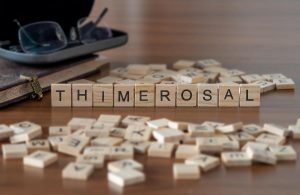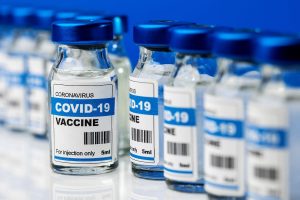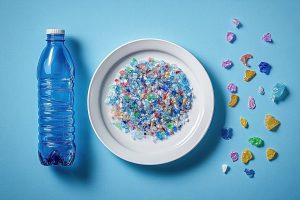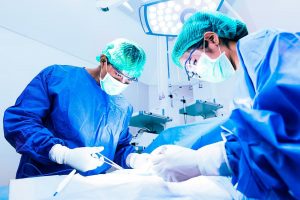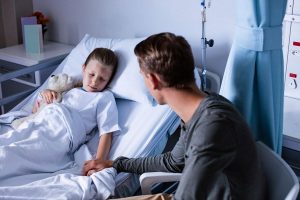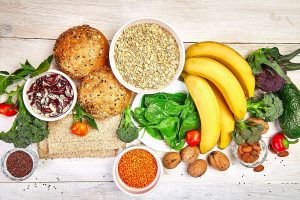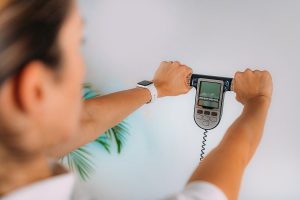With the United States now the world leader in both coronavirus cases and deaths, President Donald Trump continued to push for re-opening the economy in early May.
However, White House aides are cautioning the president about easing national social distancing guidelines too quickly. Debate continues on the best way to reopen certain sections of the country at the end of April, NBC News reported.
Right now, those guidelines are set to expire April 30.
“I think we are all expecting or planning for May 1,” a senior administration official told NBC News, though any major, new outbreaks could change the final determination.
Dr. Anthony Fauci, the nation’s top infectious disease expert, said Sunday that the economy in parts of the country could have a “rolling re-entry” as early as next month if health officials can quickly identify and isolate people who will inevitably be infected, the Associated Press reported.
Once the number of people who are seriously ill sharply declines, officials can begin to “think about a gradual reentry of some sort of normality, some rolling re-entry,” Fauci said.
In some places, he said, that might occur as soon as May. “We are hoping that, at the end of the month, we could look around and say, OK, is there any element here that we can safely and cautiously start pulling back on? If so, do it. If not, then just continue to hunker down,” Fauci said Sunday.
Whenever restrictions ease, Fauci said, “we know that there will be people who will be getting infected. I mean, that is just reality.”
Trial shows promise of antiviral remdesivir
There were 22,056 confirmed coronavirus deaths in the United States as of Monday morning, The New York Times reported, while Italy has 19,899 confirmed deaths. Until Saturday, Italy had had more lives lost to the new coronavirus than any other country.
But there was one glimmer of hope for treatment that might save lives. On Friday, the New England Journal of Medicine published a small study involving the “compassionate use” of the antiviral remdesivir. The medicine has been viewed by global health experts as the best early shot for treating the disease, the Washington Post reported.
More than two-thirds of 53 severely ill patients showed improvement in oxygen support, the researchers said. Seventeen of 30 patients who were on ventilators were able to be taken off the life-support machines, the study showed.
“We cannot draw definitive conclusions from these data, but the observations from this group of hospitalized patients who received remdesivir are hopeful,” study author Dr. Jonathan Grein, hospital epidemiology director at Cedars-Sinai Medical Center in Los Angeles, told the Post.
While 68% of the patients showed improvement in the level of oxygen support they needed, 13% of those in the study died, but that is lower than the mortality rates of 17% to 78% in China among severely ill patients, the authors wrote.
Dr. Amesh Adalja, a senior scholar at the Center for Health Security at Johns Hopkins University’s Bloomberg School of Public Health in Baltimore, called the results “encouraging,” while cautioning that they needed to be kept in perspective, the Post reported.
Economy is tanking
As the economy continues to implode, Trump said he plans to announce the creation of a second, smaller coronavirus task force this week aimed at countering the economic fallout from the virus, people familiar with the plans told the Post.
The economy is in sore need of stimulation: On Thursday, Americans faced more bleak news on unemployment numbers.
U.S. Labor Department statistics released last Thursday showed that 6.6 million more workers joined the jobless rolls in the past week, the AP reported. That comes on top of 10 million jobless claims that were filed in the previous two weeks.
It’s as if “the economy as a whole has fallen into some sudden black hole,” Kathy Bostjancic, chief U.S. financial economist at Oxford Economics, told the wire service.
When Americans do leave their homes, federal guidance now urges everyone to wear face coverings in public to curb the spread of COVID-19.
These face coverings can be non-medical masks, T-shirts or bandanas and they can be used while out at everyday shopping spots such as the grocery store, pharmacy or gas station, the AP reported. Medical-grade masks would be reserved for those dealing directly with the sick.
Any additional COVID-19 prevention measures are welcome, as the number of coronavirus cases worldwide passed 1.8 million.
States struggle
Meanwhile, the United States continued to outpace other nations with over 555,000 confirmed infections, the Times reported.
New York remains the hardest hit area of the country. More than 9,385 people have died in New York as of Monday, according to the Times. But other measures of the pandemic have been slowing.
New York Gov. Andrew Cuomo said Thursday that hospitalizations and intensive-care admissions in the state have fallen, suggesting progress. But he stressed that he did not know when New Yorkers would be able to begin a return to normal life, the Post reported.
“We’re not going to go from red to green; we’re going to go from red to yellow,” Cuomo said.
And New York City emergency responders report that they are inundated with 911 calls, the Times reported.
The fire department said it is seeing more than 300 cardiac arrest calls per day, with well over 200 of those patients dying, the newspaper said. A year ago, the department averaged 64 calls for cardiac arrest per day.
“The worst thing is taking a call and hearing somebody screaming because their loved one has stopped breathing or they’re in distress and they don’t know what to do,” said dispatcher Virginia Creary, who is also an EMT. “You just feel utterly helpless.”
Economic help slow in coming
As the U.S. economy continues to falter, Americans have struggled to find out if they can receive benefits from a $2 trillion stimulus package that was passed into law in March. The financial relief is just starting to be felt as state and federal agencies struggle to process millions of aid applications from small businesses and the newly jobless, the Post reported.
The legislation should send $1,200 to millions of Americans, including those earning up to $75,000, along with $500 per child. It will also give an additional 13 weeks in unemployment aid and a four-month enhancement of jobless benefits, the Times reported.
Hospitals on the front lines of the pandemic will also get $100 billion, the Times reported.
The help comes not a moment too soon, as roughly 90% of Americans are under stay-at-home orders, the AP reported.
Cases are spiking elsewhere, particularly in the South: Louisiana, Florida and Georgia are facing alarming increases, with 52,585 cases and at 1,738 deaths reported in those three states alone, the Times reported Monday.
According to the Times tally, as of Monday morning the top five states in coronavirus cases are: New York with nearly 187,000 cases; New Jersey with almost 62,000; Massachusetts and Michigan with about 25,500 each; and California with more than 23,000.
Last week, California recorded its first drop in COVID-19 patients receiving treatment in intensive care units last week, the Times reported.
California Gov. Gavin Newsom said Thursday he was encouraged by the drop, but isn’t drawing any hard conclusions from one day of data.
Global crisis
Globally, the situation remains grim. In Europe, Spain reported almost 17,489 deaths by Monday, despite signs the infection rate is slowing, a Johns Hopkins University tally showed. Deaths in Italy also remain high at almost 20,000, although numbers have begun to level off there as well. After a fall in daily death tolls, both countries were set to begin easing lockdown measures on Monday, NBC News reported.
In Japan, Prime Minister Shinzo Abe has declared a state of emergency in seven prefectures that include the country’s largest population centers as cases there are on the rise, the Times reported. Abe also announced an economic stimulus package worth nearly $1 trillion.
In the United Kingdom, British Prime Minister Boris Johnson was released from St. Thomas’ Hospital in London after having been treated for more than a week for persistent COVID-19 symptoms. According to the Times he will recover at Chequers, the British prime minister’s country estate.
In the meantime, the public lives of Americans have come to a halt, as the coronavirus pandemic has prompted officials across the country to close, cancel or postpone any event or activity that might foster the spread of COVID-19.
Worldwide, the number of reported infections neared 1.89million on Monday, with more than 115,000 deaths, according to the Hopkins tally.
More information
The U.S. Centers for Disease Control and Prevention has more on the new coronavirus.
Source: HealthDay
Copyright © 2025 HealthDay. All rights reserved.










